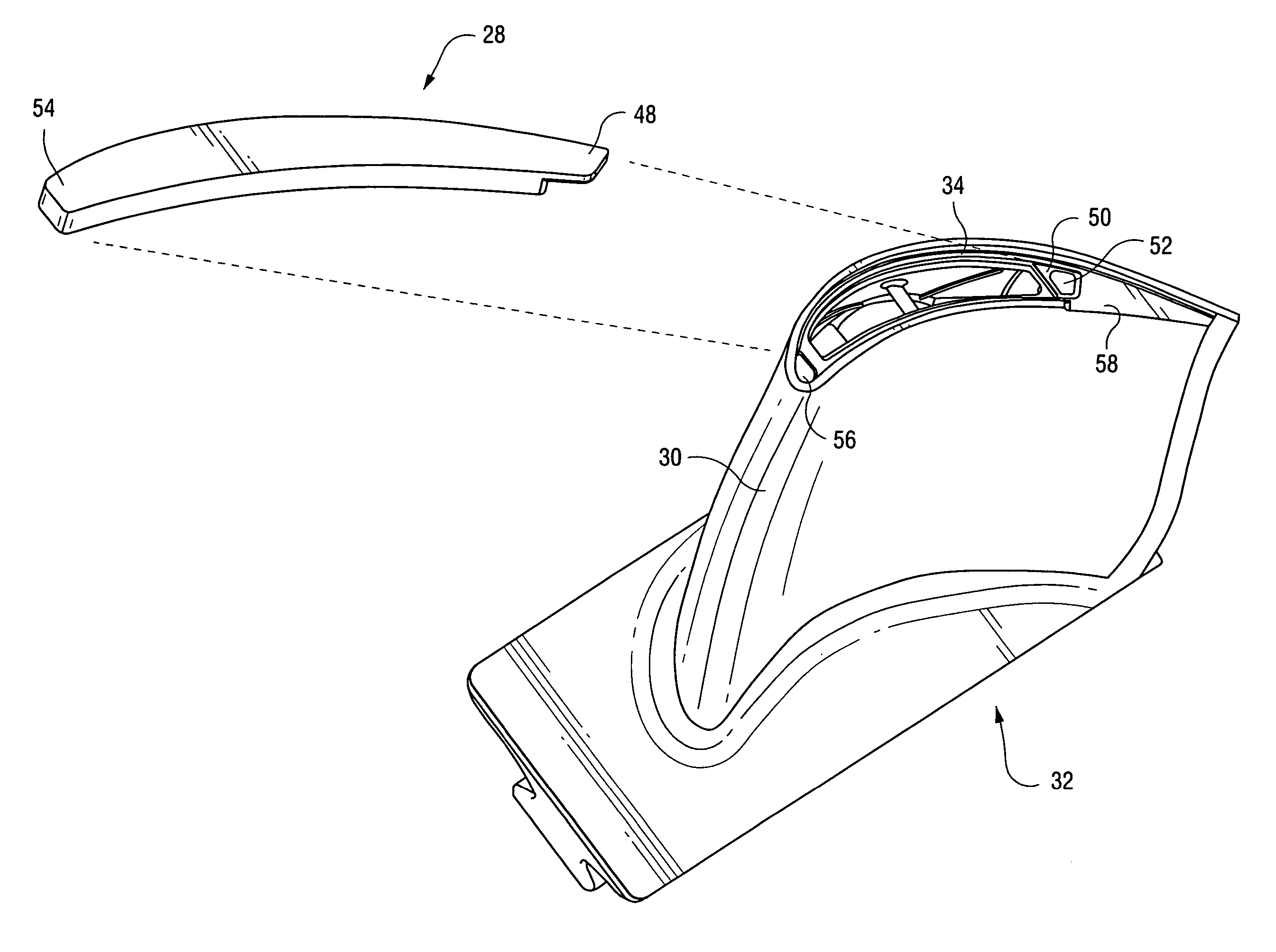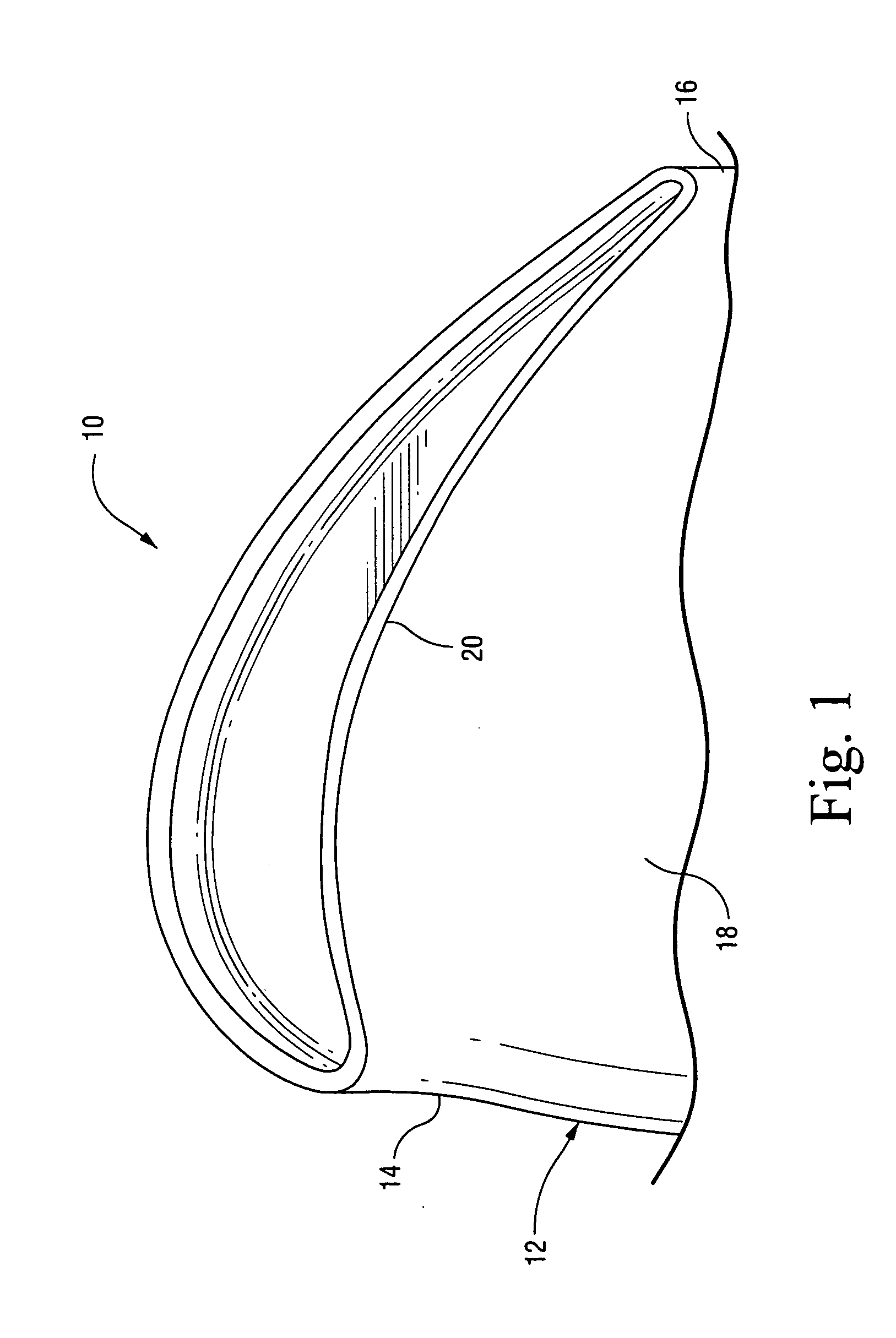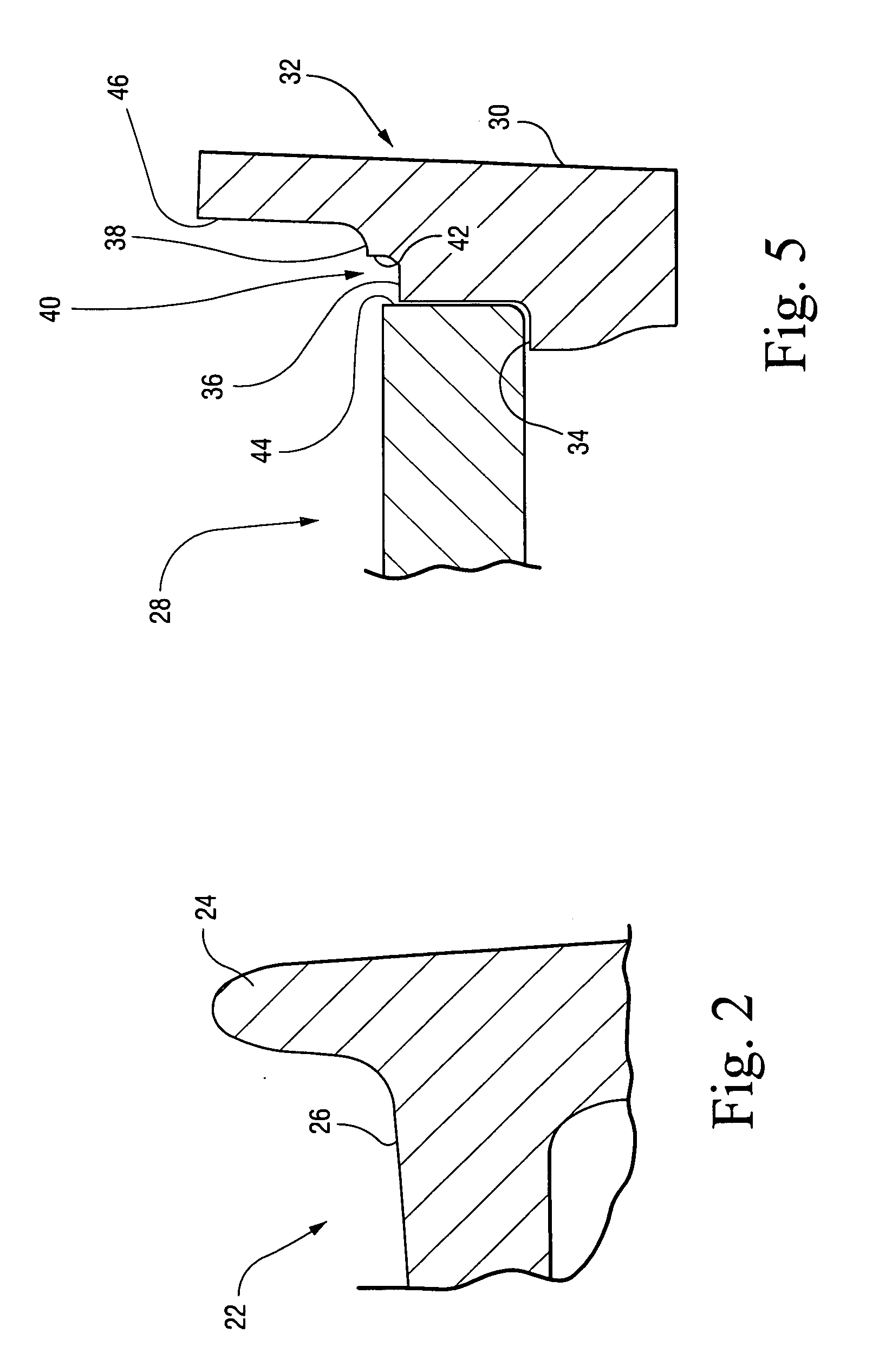Turbine blade tip cap
a turbine blade and tip cap technology, applied in the direction of machines/engines, liquid fuel engines,foundry moulding apparatus, etc., can solve the problems of rotor blades that require replacement, minute holes in airfoil surfaces, and “repair fallout", so as to facilitate attachment and relieve stress
- Summary
- Abstract
- Description
- Claims
- Application Information
AI Technical Summary
Benefits of technology
Problems solved by technology
Method used
Image
Examples
Embodiment Construction
[0013]FIG. 1 illustrates a known turbine blade 10 having an airfoil portion 12 as defined by a leading edge 14, a trailing edge 16, a pressure side 18 and a suction side 20. The blade is formed with an integral, cast-in tip cap 22. In such blade designs, the use of internal core support pins (not shown) is required to provide the necessary support during casting, since it is not possible to hold the core support from the radially outer end of the blade. The ends of the core support pins extend through the airfoil and lie flush with the airfoil exterior surface. As indicated above, these support pins often fail, i.e., melt, during an airfoil coating-stripping process, particularly if not masked properly, leaving minute holes in the airfoil surfaces.
[0014]FIG. 2 shows an enlarged detail of the cast-in tip cap 22, with a peripheral rim 24 at the radially outer end of the airfoil portion 12, extending above or outwardly of the end closure portion 26 of the tip cap.
[0015]FIGS. 3-5 show...
PUM
| Property | Measurement | Unit |
|---|---|---|
| thickness | aaaaa | aaaaa |
| angle | aaaaa | aaaaa |
| thickness | aaaaa | aaaaa |
Abstract
Description
Claims
Application Information
 Login to View More
Login to View More - R&D
- Intellectual Property
- Life Sciences
- Materials
- Tech Scout
- Unparalleled Data Quality
- Higher Quality Content
- 60% Fewer Hallucinations
Browse by: Latest US Patents, China's latest patents, Technical Efficacy Thesaurus, Application Domain, Technology Topic, Popular Technical Reports.
© 2025 PatSnap. All rights reserved.Legal|Privacy policy|Modern Slavery Act Transparency Statement|Sitemap|About US| Contact US: help@patsnap.com



